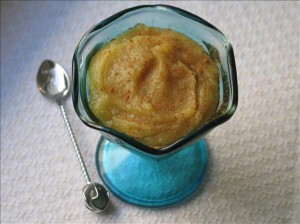FIFTY YEARS OF CASTRO’S ADMINISTRATION IN CUBA
The Historian of Havana, Eusebio Leal Spengler, called to save the memory of the Cuban cuisine, and said he felt predilection for dishes that have disappeared from the tables as Cuban sweet potato, beef jerky and banana cream (FuFú).
“The importance of this popular food, truly gourmet, as the French would say, or exquisite, fancy is that everyone who comes to a country, perhaps supported by the old motto: When in Rome do as the Romans do. And that do is good eating, “Leal said while inaugurating the III Rescue and Promotion of Culture Culinaria” Savoring lo Cubano “.
The forum held program joined the celebrations for the 493 anniversary of Havana and was organized by the tourism company Habaguanex, within the Office of the Historian of the City, as reported by the Cuban weekly options.
Were a total of four days of “culinary feast” in the Historical Center of Old Havana, according to event organizers.
Leal called “work with the imagination without compromise” to get Cuban food occupies a place of honor in the good taste of those who come from anywhere in the world and first of all Cubans. ”
Sweet splendid
In his dissertation, also a member of the Communist Party Central Committee stressed the significance of the traditions in Cuban cuisine culture, claimed the challenges of national cuisine and delicacies recalled already disappeared from everyday life on the island.
So said the jerky, banana cream and desserts last stages as the sweet potato, pumpkin custard, and sweet green papaya, grapefruit, citron and mamey de Santo Domingo, the who-said-“was a sweet truly splendid. ”
Leal urged the commerce and cuisine to raise the quantity and variety of domestic to rescue many culinary traditions and forgotten, and evoked some parts of the east of the country with many coconut trees, where you can enjoy a delicious coconut icing and save then the gourd to make good coffee.
“Food is the main concern of the man who emerged from the cave. Since walking down and crossed the Bering Strait to enter the Americas, does so many tens of thousands of years and to get not only imagined in paintings he created in the caves, but he devised weapons to shoot down bison , servants, large animals, and to eat, “said Leal.
He said the food stamp is so marked in some countries than its inhabitants can not do without their condiments and toppings of their dishes when they migrate or travel to other places.
“Being an island, an archipelago in the middle of the Caribbean Sea, which is American Mediterranean gastronomic influences came from all over the world and all those components that formed, nurtured and refined Cuban culture,” he said.
Citing challenges themselves every time the national cuisine, Leal is referred to some recent inventions Creoles as “doing a type of bread that becomes itchy when dust, crumbs that it does no good to eat and with oil, garlic and a pinch of salt. ”
“The memory of eating is very important because it leads us to find ourselves. We are a mixed culture, in our table match the peoples of Spain, Africa, the vast country’s east, China, and other innovations that were incorporated as for example, Arabic food, “said the historian.
Sources: CafeFuerte/Excerpts/InterrnetPhotos/www.thecubanhistory.com
Se llama a rescatar el boniatillo y crema de plátanos/ Arnoldo Varona, Editor
www.thecubanhistory.com
Cincuenta años de Administracion de los Castro en Cuba
SE LLAMA EN CUBA A RESCATAR EL BONIATILLO Y LA CREMA DE PLATANOS (FUFU).
El Historiador de La Habana, Eusebio Leal Spengler, llamó a rescatar la memoria de la gastronomía cubana, y dijo sentir predilección por platos que han desaparecido de las mesas cubanas como el boniatillo, el tasajo y la crema de plátanos.
“Lo importante de esa comida popular, verdaderamente gourmet, como dirían los franceses, o exquisita, es la que apetece todo el que llega a algún país, quizá apoyado por el antiguo lema de: a donde fueres hacer lo que vieres. Y ese hacer es el buen comer”, aseveró Leal al inaugurar el III Encuentro de Rescate y Promoción de la Cultura Culinaria “Saborear lo Cubano”.
El foro celebró se integró al programa de celebraciones por el aniversario 493 de La Habana y fue organizado por la compañía turística Habaguanex, perteneciente a la Oficina del Historiador de la Ciudad, según reporta el semanario cubano Opciones.
Fueron en total cuatro días de “fiesta culinaria” en el Centro Histórico de La Habana Vieja, según los organizadores del evento.
Leal llamó a “trabajar con la imaginación sin renunciar a nada” para lograr que la comida cubana ocupe un espacio de predilección en el buen gustar de quienes vienen de cualquier parte del mundo y en primer lugar de los cubanos”.
Dulces espléndidos
En su disertación, el también miembro del Comité Central del Partido Comunista acentuó el significado de las tradiciones en la cultura culinaria cubana, revindicó los desafíos de la gastronomía nacional y rememoró manjares ya desaparecidas de la cotidianidad en la isla.
Así mencionó el tasajo, la crema de plátanos y postres de etapas pasadas como el boniatillo, el flan de calabaza, y los dulces de fruta bomba verde, de toronjas, de cidras y de mamey de Santo Domingo, del que –aseguró- “quedaba un dulce verdaderamente espléndido”.
Leal exhortó al sector del comercio y la gastronomía a elevar la cantidad y variedad de productos nacionales para rescatar muchas tradiciones culinarias ya olvidadas, y evocó algunos lugares de la zona oriental del país con muchos cocales, donde se puede degustar un delicioso coco glasé y guardar la jícara para tomar luego un buen café.
“La comida es la preocupación principal del hombre desde que emergió de la cueva. Desde que bajó andando y atravesó el estrecho de Bering para ingresar en el continente americano, hace tantas decenas y decenas de miles de años y para conseguirla no solamente la imaginó en las pinturas que creó en las cuevas, sino que ideó armas para derribar a bisontes, siervos, grandes animales, y poder comerlos”, manifestó Leal.
Comentó que el sello de la gastronomía es tan marcado en algunos países que sus habitantes, no pueden prescindir de sus condimentos y aderezos de sus platos cuando emigran o viajan a otros lugares.
“Siendo una isla, un archipiélago en medio del mar Caribe, que es mediterráneo americano, las influencias gastronómicas vinieron de todas partes del mundo y de todos aquellos componentes que formaron, nutrieron y perfilaron la cultura cubana”, manifestó.
Mencionando los propios desafíos de cada época en la gastronomía nacional, Leal se refirió a algunos recientes inventos criollos como “ hacer un tipo de pan que cuando se pica se vuelve polvo, ese que no hace migas y no sirve para comer con aceite, ajo y una pizca de sal”.
“La memoria de la gastronomía es muy importante porque nos lleva a encontrarnos con nosotros mismos. Somos una cultura mestiza; en nuestra mesa coinciden los pueblos de España, África, del inmenso país del oriente, China, y otras novedades que se incorporaron como, por ejemplo, la comida árabe”, expresó el historiador.
Sources: CafeFuerte/Excerpts/InterrnetPhotos/www.thecubanhistory.com
Se llama a rescatar el boniatillo y crema de plátanos/ Arnoldo Varona, Editor
www.thecubanhistory.com






